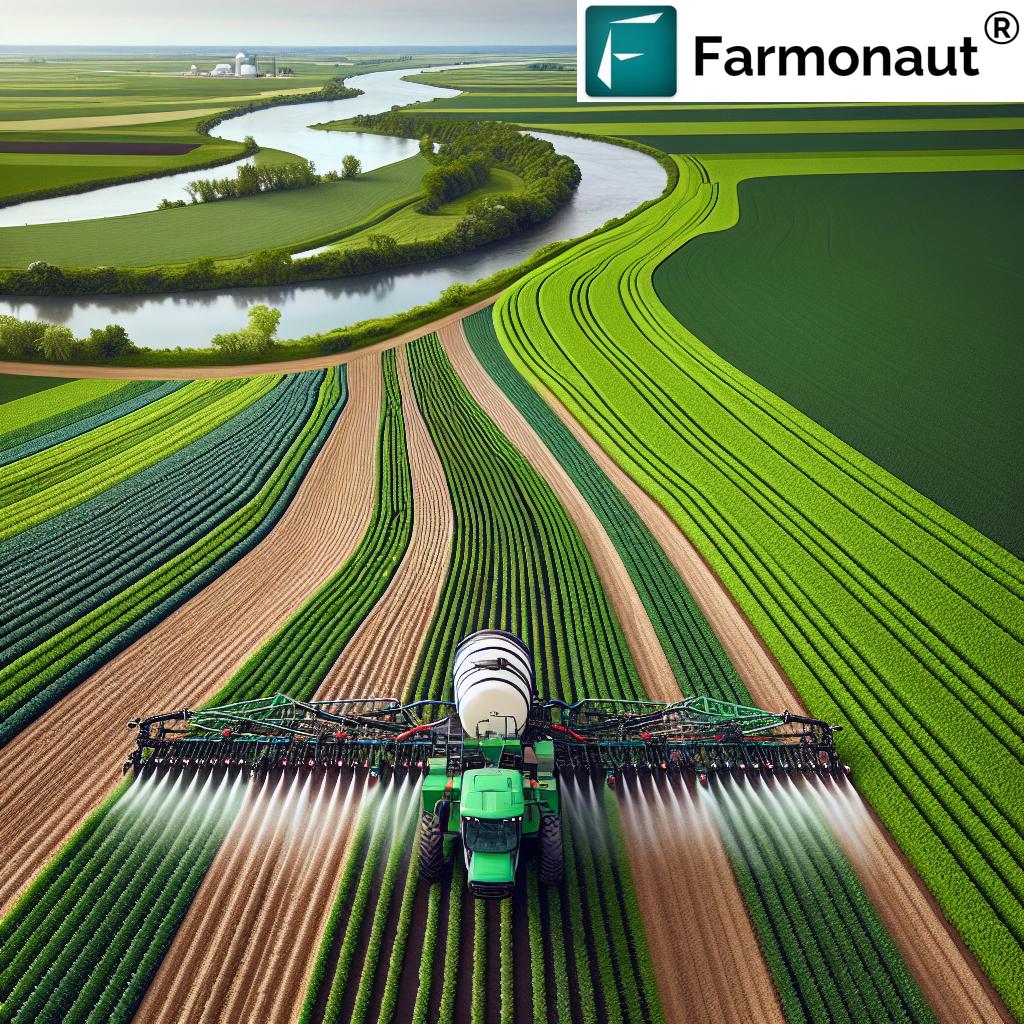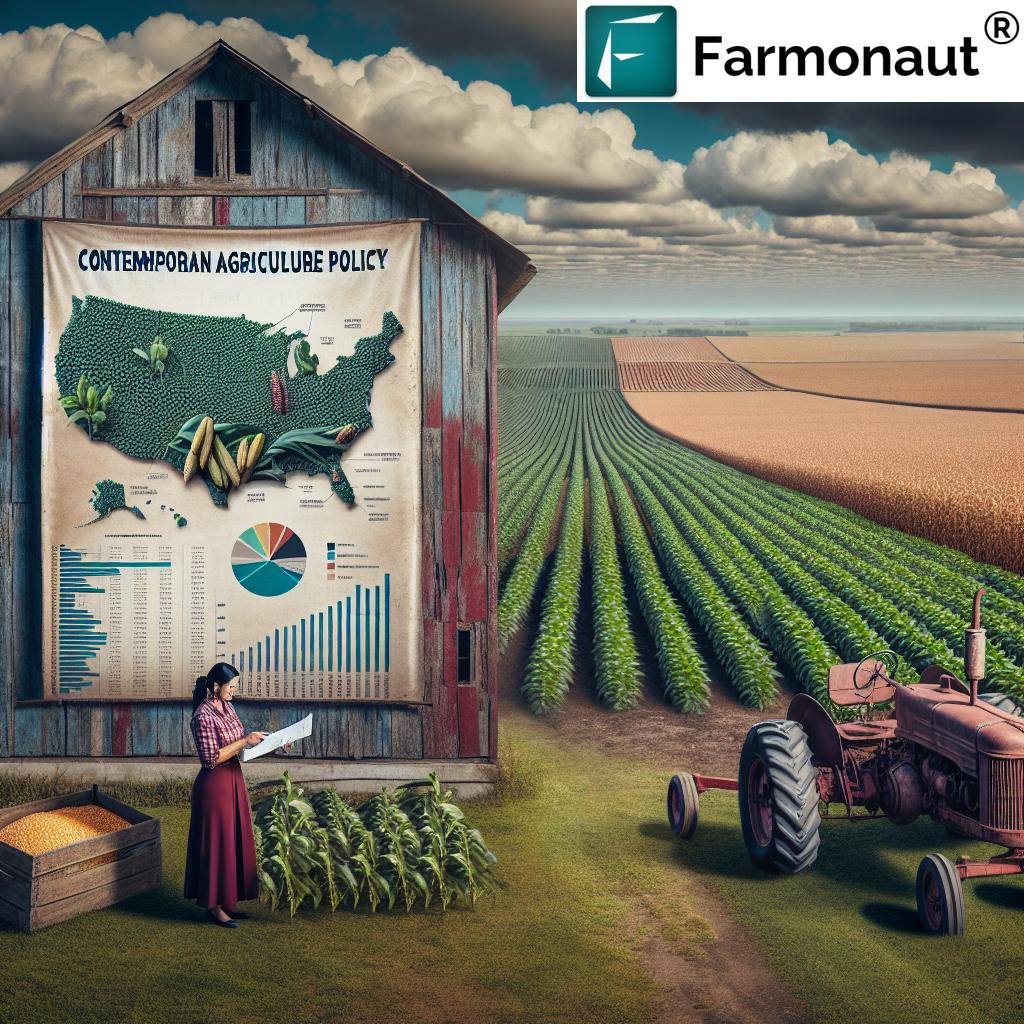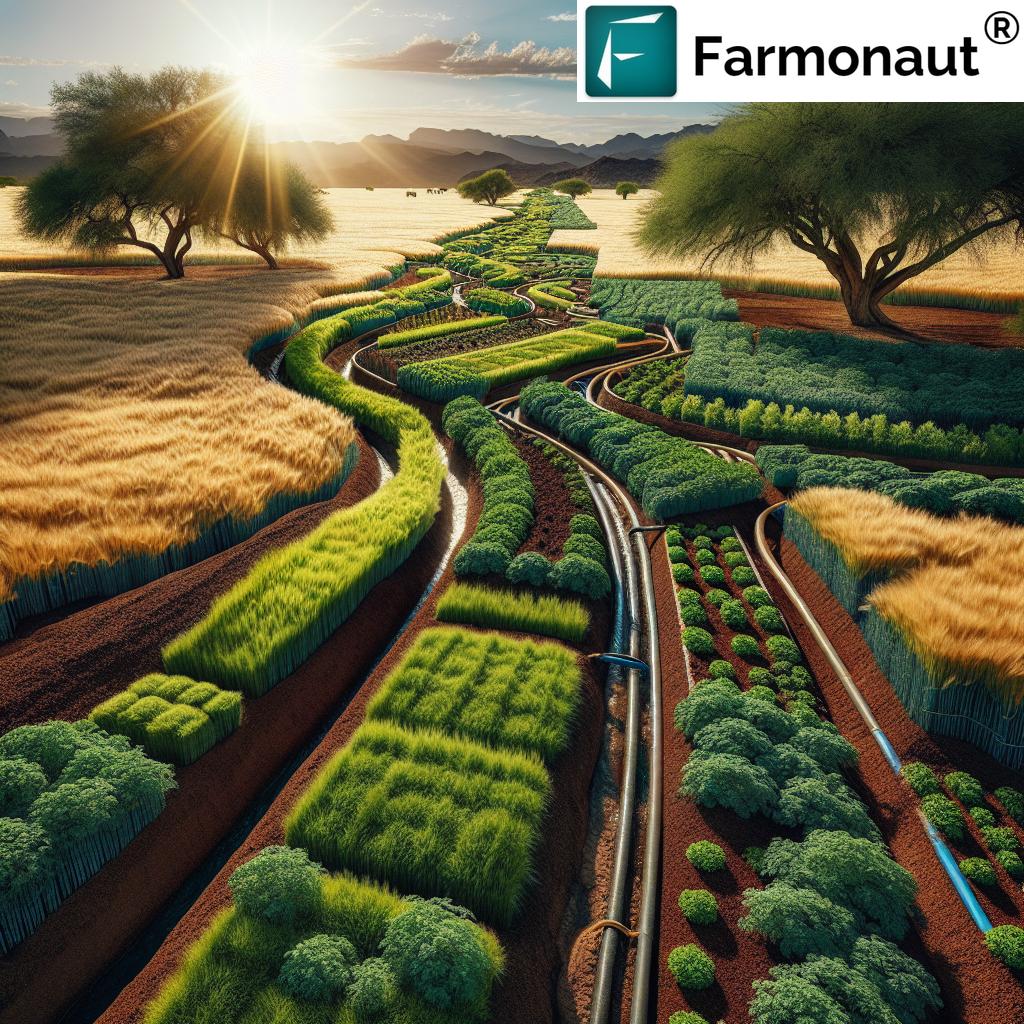Apply for a Farm Operating Loan: Essential 2025 Guide
“Did you know? Over 60% of farm loan applications in 2024 were submitted online, streamlining the approval process for 2025.”
Summary: Applying for a Farm Operating Loan in 2025: A Comprehensive Guide
In 2025, the agricultural sector remains a cornerstone of the global economy, providing food security and raw materials for a growing population. For many farmers, securing adequate financing is critical to sustaining and expanding operations. A farm operating loan is one of the most important financial tools used to cover operational expenses such as seed, fertilizer, labor, equipment repairs, and more throughout the growing season. Understanding how to effectively apply for a farm operating loan can mean the difference between a successful harvest and financial strain.
Table of Contents
- What is a Farm Operating Loan?
- Who Provides Farm Operating Loans?
- Key Eligibility Requirements for Applying in 2025
- Farm Operating Loan Comparison Table (2025)
- Farm Operating Loan Application Process: Step-by-Step Guide
- Top Tips to Manage Operational Expenses and Cash Flow Effectively
- Latest Trends: Technology, Sustainability & Risk Management (2025)
- How Farmonaut Supports Modern Farming and Financial Access
- Farm Operating Loan: FAQ 2025
- Conclusion: Your Path to Financial Security and Sustainable Farm Growth
What is a Farm Operating Loan?
A farm operating loan is a short-term loan designed to cover the day-to-day operational costs of running a farm or agricultural business. Unlike loans intended for buying land or large equipment, operating loans are typically used for ongoing needs like seed, fertilizer, labor, equipment repairs, irrigation, and other inputs that are necessary throughout the growing season. These loans help farmers manage the cash flow gaps that occur between the planting season and harvesting, ensuring smooth operations even when income is seasonal.
By aligning repayment terms with the farming cycle, operating loans are structured to match the realities of the agricultural sector, enabling farmers to stay productive and maintain the financial health of their businesses year after year.
Key Features of Farm Operating Loans in 2025
- Short-Term Structure: Repayment periods are usually one year or less, aligned with harvest income cycles.
- Flexible Purpose: Funds can be used for any operational expense—seed, fertilizer, labor, fuel, crop protection, equipment repairs, or irrigation.
- Cash Flow Bridging: Helps manage the “gaps” between planting and harvest when income isn’t immediately available.
- Wide Availability: Offered by government agencies, commercial banks, credit unions, and agricultural cooperatives in 2025.
Farm operating loans remain among the most common financial tools enabling farmers to remain competitive in a rapidly changing agricultural sector. Understanding the nuances of these loans is critical for successful farming in 2025 and beyond.
Who Provides Farm Operating Loans in 2025?
Farm operating loans are available through a robust network in 2025, including both public and private sector lenders. Understanding and comparing loan offerings is essential when you apply for a farm loan.
Main Lenders Offering Operating Loans
- Government Agencies: In the United States, the US Department of Agriculture (USDA) Farm Service Agency (FSA) provides subsidized farm operating loans. These loans often have favorable rates and terms, especially for small-scale and beginning farmers or those with imperfect credit histories.
- Commercial Banks and Credit Unions: Traditional financial institutions provide competitive farm loan products, typically requiring collateral and a strong credit history. Commercial banks and rural credit unions remain a popular option for established growers.
- Agricultural Cooperatives and Rural Lenders: These specialized lenders understand the unique needs of the agricultural sector. They may offer more flexible collateral requirements, faster approval processes, and tailored loan products for farming operations of all sizes.
Farmers should note that eligibility criteria, loan amounts, required documents, and approval timelines can vary significantly between different types of lenders. It’s always best to compare products from various institutions before beginning your application process.
Key Eligibility Requirements for Applying in 2025
Securing a farm operating loan in 2025 requires meeting specific eligibility criteria. Lenders want to ensure that applicants can responsibly manage borrowed funds and successfully repay the loan. Let’s break down the most common requirements:
Essential Farm Operating Loan Criteria
- Proof of Active Farming: Applicants must demonstrate they are engaged in farm operations through documentation such as tax returns, business registrations, land ownership or lease agreements, and operational plans.
- Creditworthiness: Most lenders will review credit reports and scores, looking for a history of responsible financial behavior. Government loan programs like the USDA FSA may be more lenient, especially for new or beginning farmers or those in underserved areas.
- Business Plan or Cash Flow Projections: A detailed plan showing how the funds will be used and how the farm will generate income to repay the loan is usually required. This step demonstrates your understanding of necessary farm expenses and repayment capability.
- Collateral: Many loans require collateral—such as farmland, equipment, or other assets—to secure the loan and decrease risk for the lender.
- Minimum Farm Income: Some lenders specify a minimum yearly farm income to ensure sufficient cash flow for loan repayment.
Understanding these eligibility requirements and gathering the necessary documents in advance is a vital part of the application process, enabling farmers to approach institutions with confidence.
“In 2025, typical farm operating loan amounts range from $50,000 to $500,000, depending on farm size and needs.”
Farm Operating Loan Comparison Table (2025)
To help you assess your loan options, here’s a comprehensive comparison table of major operating loan providers and their key features for 2025. Use this table to compare interest rates, eligibility criteria, repayment terms, and more.
| Lender Name | Minimum Loan Amount (USD, est.) | Interest Rate (annual %, est.) | Eligibility Criteria | Approval Timeframe (days, est.) | Required Documents | Repayment Terms (length, est.) |
|---|---|---|---|---|---|---|
| USDA FSA (Farm Service Agency) | $50,000 | 3.5% – 5% | Proof of farming; lower credit accepted for beginning farmers | 30 – 45 | Tax returns, farm business plan, collateral documents | Up to 1 year (aligns with crop cycle) |
| AgriBank (Commercial) | $75,000 | 6% – 7.5% | Good credit history; minimum annual farm income | 14 – 30 | Financial statements, crop projections, collateral | Up to 1 year (custom terms possible) |
| Farm Credit System (Cooperative) | $50,000 | 5% – 6.5% | Active farmer status; member of cooperative | 21 – 35 | Proof of cooperative membership, tax records | Up to 1 year, flexible terms |
| Local Credit Union | $40,000 | 6.5% – 8% | Good credit; collateral required | 10 – 20 | Short application + proof of land or equipment | 6-12 months |
| Regional Rural Bank | $35,000 | 6% – 8.5% | Land ownership, farming license, income records | 15 – 25 | Ownership docs, tax returns, collateral | 6-12 months |
Tip: Eligibility requirements and rates change periodically. Always check current terms with specific lenders before you apply for a farm operating loan.
Farm Operating Loan Application Process: Step-by-Step Guide
Applying for a farm operating loan in 2025 is a structured process designed to help you demonstrate financial responsibility and secure the funds necessary for a successful farming season. Below, you’ll find a comprehensive, step-by-step guide covering each phase of loan application and approval.
1. Preparation: Gather Financial Documents & Develop Your Plan
- Financial Records: Collect tax returns (previous 2-3 years), balance sheets, income statements, and expenses. If you’re a beginning farmer, collect lease agreements, land titles, or proof of operation.
- Cash Flow Projections: Prepare a detailed estimate of projected income and expenses for the coming season. This will demonstrate to lenders how you plan to generate sufficient income for repayment.
- Operational Budget: List all expected costs—seed, fertilizer, equipment, labor, fuel, repairs, etc.—for the period you are requesting funds.
2. Choose the Right Lender
- Review Options: Refer to the comparison table above to evaluate which lender matches your eligibility and operational needs.
- Compare Terms: Look for the most favorable rates, fees, collateral requirements, and repayment periods for your farm size and income history.
- Consider Government Programs: If you’re a small or beginning farmer, government agencies like the USDA FSA may offer better terms and increased support, especially if you meet specific criteria for subsidized programs.
3. Complete the Application and Attach Documentation
- Fill Out Application: Complete the lender’s farm operating loan application form fully and accurately.
- Attach Documentation: Include your farm business plan, financial/cash flow projections, tax records, and proof of collateral.
- Sign and Submit: Provide electronic or physical signatures as required and submit your application for processing.
Note: In 2025, most lenders accept electronic applications, and some allow uploads of documentation via their online portals, significantly streamlining the process for applicants.
4. Loan Review and Approval
- The lender reviews your credit history, financial documentation, business plan, and collateral.
- Communication may be digital or in-person, depending on lender.
- The review process typically takes anywhere from 10 to 45 days, depending on complexity and lender size.
5. Receive and Manage Your Funds
- Funds Disbursed: Once approved, funds are often transferred as a lump sum, although some lenders may provide installments based on your operational plan.
- Keep Records: Maintain accurate and up-to-date records of how funds are used to cover operational expenses and ensure you remain eligible for future farm operating loans.
6. Make Timely Repayments
- Repayment terms usually coincide with harvest or other farm income periods.
- Many lenders provide online repayment options, automatic bank transfers, or payment reminders.
- Monitor your cash flow closely to avoid missed or late payments, which can affect credit for future loans.
Top Tips to Manage Operational Expenses and Cash Flow Effectively
A successful farm is not just about growing crops, but also about effective financial management. Maximizing returns on your farm operating loan depends on how well you control expenses and maintain positive cash flow. Here are strategies and solutions to help you thrive in the 2025 agricultural sector.
Essential Farm Financial Management Tips
- Plan and Monitor Cash Flow: Create a cash flow calendar mapping income from harvest against projected expenses such as labor, fertilizer, and repairs. Update it monthly for better accuracy.
- Track Use of Loan Funds: Allocate every dollar of your operating loan in advance and stick to your plan to avoid unexpected shortfalls.
- Leverage Technology: Use farm management apps and satellite monitoring (see below) to monitor crop health, optimize input use, and reduce unnecessary expenditures.
- Compare Input Costs: Shop around for the best prices for seed, fertilizer, fuel, and labor—every 1% saving matters.
- Implement Risk Management: Use crop insurance and related financial products to cushion the impact of weather or market surprises. Some lenders may even require or subsidize risk management tools.
- Repay Promptly: Schedule payments around harvest or expected sales. Early or on-time repayments may improve your access to larger loans and more favorable rates in future.
Recommended Tools:
- For advanced farm management and monitoring using satellites and AI, try Farmonaut’s Large Scale Farm Management App – It helps farmers and agribusinesses get real-time insights on crop health (NDVI), soil conditions, and operational efficiency, supporting data-driven financial decisions.
- Leverage Farmonaut’s Crop Loan and Insurance Solutions – Designed to streamline the verification of farm conditions via satellite, improving access to loans and insurance for qualifying farmers and mitigating risks for lenders.
- For optimizing fleet logistics and minimizing operational costs, explore Farmonaut’s Fleet Management Tools – These tools assist in equipment tracking, fuel management, and route optimization, essential for achieving operational efficiency and cost control.
Latest Trends: Technology, Sustainability & Risk Management (2025)
As we move further into 2025, several trends are shaping how farmers apply for a farm operating loan and succeed in a competitive environment:
- Technology Integration: The use of digital and satellite-based platforms for loan applications, monitoring, and verification is now mainstream. Most lenders support online applications, expediting approvals and fund disbursement.
- Sustainable Agricultural Practices: Lenders increasingly prefer farms investing in sustainability (like carbon footprinting or regenerative practices). Some may offer incentives for farmers adopting climate-resilient approaches or advanced input management.
- Robust Risk Management: Unpredictable weather and global market volatility make comprehensive risk management practices—integration of satellite monitoring, crop insurance, and diversified operations—essential for protecting both farmer and lender.
- Blockchain-Based Traceability: Securing product traceability is gaining traction, increasing trust in the agricultural value chain and potentially improving loan qualification and insurance.
- Environmental Impact Assessment: Lenders are interested in the environmental footprint of farming operations. Tools that track emissions, resource use, and compliance with environmental regulations are becoming standards for qualification and monitoring.
Innovative Solutions to Improve Loan Access and Management
- Try Farmonaut’s Carbon Footprinting Tool to track and manage your farm’s carbon impact. These features may help you qualify for favorable loan products or participate in climate-smart credit programs.
- Farmonaut’s Traceability and Crop, Plantation & Forest Advisory services make supply chains transparent and compliant—important for larger farms or food businesses seeking to boost their credibility for lenders.
How Farmonaut Supports Modern Farming and Financial Access
At Farmonaut, we believe that technology-driven insights and resource management are the foundation of sustainable, profitable farming in the 21st century. Our satellite-based agri-solutions are designed to provide farmers, agribusinesses, financial institutions, and governments with real-time, affordable, and actionable data.
- Satellite-Based Monitoring: We deliver multispectral imagery and AI-powered analytics to monitor crop health (NDVI), soil conditions, and operational performance across every hectare. This supports both operational decisions and loan/insurance verifications.
- AI & Blockchain-Driven Solutions: Our Jeevn AI Advisory System offers customized support and real-time insights, answering specific farming, mining, or resource queries. Our blockchain systems ensure the traceability of products and resources—fostering trust along the supply chain.
- Environmental and Resource Management: Our platform features real-time environmental tracking—such as carbon footprint monitoring for agriculture—helping you comply with regulations and unlock climate-linked financing.
- Financing Support for Agricultural Loans: By partnering with banks and financial institutions, our satellite-based verification tools (see Crop Loan & Insurance) simplify the farm loan approval and risk assessment process, grant faster and more transparent access to much-needed funds, and reduce fraud.
- Accessible Multi-Platform Services: Access Farmonaut via Android, iOS, web app, or API for seamless field monitoring, reporting, and data integration. No expensive hardware required!
Integrate with Farmonaut directly into your business system: Use our satellite insights API or consult our API developer documentation for customization and automation of your operational analytics.
Farmonaut’s offerings are subscription-based, scalable, and suitable for every size and type of agricultural enterprise—making powerful technology affordable for everyone, from small landholders to large agribusinesses.
Farm Operating Loan: FAQ 2025
Q1: What is a farm operating loan and how is it different from other farm loans?
A: A farm operating loan is used to cover the day-to-day cost of running a farm—such as buying seeds, fertilizer, paying labor, and repairing equipment. Unlike long-term loans for buying land or large machinery, operating loans are typically short-term (one year or less) and structured to coincide with the farming cash flow cycle.
Q2: Who can apply for a farm operating loan in 2025?
A: Most lenders require that applicants actively participate in farming operations—through farm ownership, lease agreements, or co-ops. Some government loans extend eligibility to small, new, or beginning farmers with limited credit history.
Q3: What documents are needed to apply for a farm operating loan?
A: Typically, you should provide tax returns, farm business plans or cash flow projections, proof of land ownership/lease, financial statements, and, in some cases, collateral documentation.
Q4: How long does approval take in 2025?
A: Depending on the lender, approval can take anywhere from 10 to 45 days. Completing your application with all mandatory documents upfront can speed up the process.
Q5: When does repayment for operating loans typically occur?
A: Repayment is often scheduled after harvest when farm income is received. Most loans have a term of up to one year, though some flexibility is possible.
Q6: How can Farmonaut’s technology help my loan or insurance application?
A: Our platform provides satellite-driven verification and real-time analytics for crop condition reporting, supporting both loan and insurance eligibility and transparency. See more under Farmonaut’s Crop Loan & Insurance.
Q7: Is it possible to apply for a farm operating loan online in 2025?
A: Yes, most lenders now provide secure online application portals. Digital document uploads and e-signatures have become standard, drastically reducing processing times and paperwork.
Q8: Do sustainable practices or environmental monitoring impact loan eligibility?
A: Increasingly, yes. Lenders are prioritizing climate-smart farming, and may offer incentives or lower rates for farms that use tools for carbon footprint tracking or maintain environmental compliance—see Farmonaut’s Carbon Footprinting for details.
Conclusion: Your Path to Financial Security and Sustainable Farm Growth
Applying for a farm operating loan in 2025 remains a critical step for farmers and agribusinesses looking to cover necessary operational expenses and maintain financial health throughout the farming season. By understanding the types of farm loans available, preparing comprehensive application materials, and leveraging technology, farmers can secure suitable funding to drive productivity, sustainability, and business growth.
Staying up-to-date with trends—like online loan platforms, satellite monitoring, sustainability requirements, and risk management tools—will further empower your farm for success. Whether you’re a beginning farmer or an established grower, proactively planning for your cash flow needs and adopting data-driven strategies is essential to thriving in the evolving agricultural sector.
If you want to take your farm management, resource optimization, and loan qualification to the next level, explore our suite of digital and satellite-based solutions at Farmonaut. Our tools support better decision-making, transparency, loan verification, environmental compliance, and scalable operations—benefiting you and the entire agricultural value chain.
Ready to harness the power of satellite-driven insights in your farm operations and apply for a farm operating loan with confidence? Download the Farmonaut app or explore our API solutions today!














